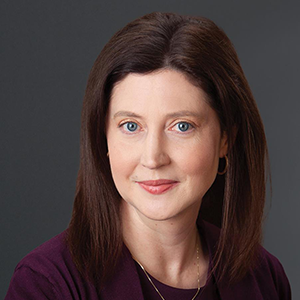Game Theory

Don’t be surprised if you see the name Sigmund Kukla in the producing credits of a major video game in the future. Because this high school sophomore has already produced a video game, Crop Craze, for virtual reality platform Oculus.
Sigmund “Sig” Kukla, Mt. Lebanon Class of 2024, has always been technologically savvy. In fourth grade, he started learning about 3D printers and went on to build one of his own. He appeared in a Mt. Lebanon Magazine story in 2017 when he and a classmate made a 3D-printed wrist brace for a fellow student with cerebral palsy so that he could play cello. Kukla also skipped fifth grade, started taking classes at the high school while in middle school, and he taught himself about virtual reality (VR) in seventh grade.
According to Merriam-Webster, virtual reality is “an artificial environment which is experienced through sensory stimuli (such as sights and sounds) provided by a computer, and in which one’s actions partially determine what happens in the environment.”
The history of virtual reality can be traced back to the 1800s, to the early stages of photography, though Jaron Lanier would not officially coin the term until the 1980s. Early photographers used their knowledge to make encompassing experiences for audiences, which were the early predecessors of VR.
In 1955, cinematographer Morton Heilig designed the Sensorama, a booth that used sound, smells, a vibrating seat and 3D video to make viewers feel as if they were in one of six short films. He also created the Telesphere Mask, the first head-mounted display which would later become the vehicle for most virtual reality content. This mask combined with computer scientist Ivan Sutherland’s Ultimate Display, a concept where a virtual world is so immersive that one can’t tell the virtual from the real-life, form the basis for present-day VR. During the Vietnam War, VR helped many returning veterans to overcome PTSD, and pilots and astronauts have been using VR since the 1970s in their training.
Later, in the 1990s, gaming companies started developing VR products, turning virtual reality into a commercial form of entertainment. In the 2010s, when the technology had advanced, global VR brands like Google Cardboard and Oculus were born.
Google Cardboard is how Kukla enters VR history. His sister, Millicent, 12, received a Google Cardboard for Christmas in 2016, and Kukla saw this as a perfect opportunity to learn how to create games in virtual reality. Google Cardboard is a VR headset that works with mobile phones to create a VR experience. Kukla taught himself Unity, a VR-compatible game engine, and C#, a programming language used with Unity, from scratch by examining code from other Google Cardboard games.
He designed one of his earlier projects, a drum simulator, to help his sister learn to play. In this game, the player makes a drum beat and the drums light up when you need to hit them to replicate the beat. In seventh grade, he also recreated his Honors Chemistry classroom in virtual reality as a retirement gift for his teacher, Mark Kernion.
Kukla created his first game, VR Playground, a parkour game, in November 2017. He then developed three more games: object-collection runner game Rabbit Dash VR, adventure game Trailblazer VR and memory game Puzzle VR. All four of these games are available on the Google Play store for people to download and play under the name PicoPlanet Developing, which is Kukla’s indie game developer namesake.
This March, Oculus, one of the frontrunners of VR technology, approved Kukla’s biggest project yet—Crop Craze. Kukla said this farming simulation is his favorite game he’s made to date, and feedback has been positive so far. “It’s a relaxing game that you don’t need to put a huge amount of effort into. You can just step into the VR headset and enjoy the virtual world while you’re playing,” he said. Crop Craze was approved for Oculus Quest and Quest 2, and is available to play on other PC virtual reality headsets.
Developing a fully-functional virtual reality video game is not easy, though. Each model and little piece of code can take up to 30 minutes to write, and sometimes developers need to make many revisions for the game to function. One also has to understand how to use coding languages, such as C#. Kukla estimates that he has put in 300-400 hours of work on Crop Craze so far.
“There’s for sure a lot of work going into that to build something that people can use intuitively and enjoy,” Kukla said. Luckily, Kukla has helpful friends. “I have quite a few friends who have supported me really well and purchased my games and shared the word around on online communities like Discord.”
The Covid shutdown gave Kukla over a year to focus heavily on Crop Craze. All of his games are targeted towards six-to 15-year-olds, and provide entertainment in a new realm. He believes that everyone being stuck at home helped accelerate the popularity of VR, “filling a great niche” that many people were missing in their every day lives. Rising demand also gave VR companies a push to develop their products even further.
Kukla’s prediction is that VR will be “something you use almost as much as your phone.” He thinks a VR headset could replace keyboards and mice, especially as the technology becomes more efficient.
As for Kukla’s next endeavor, he’s taking inspiration from 70s classic, Atari Breakout, and making it immersive.





